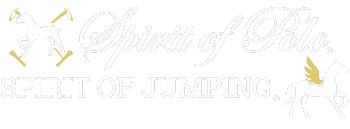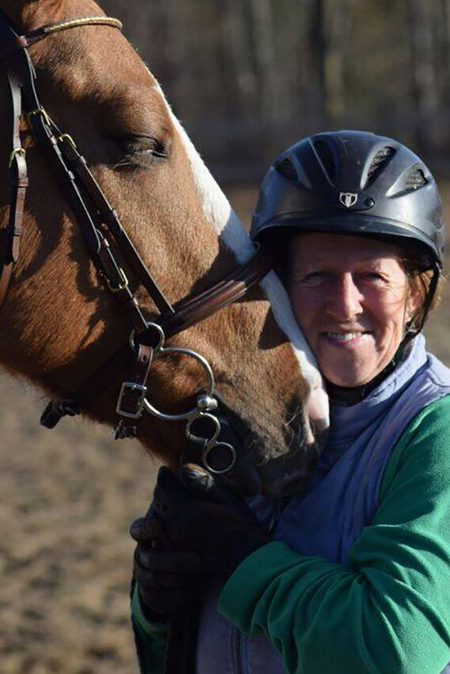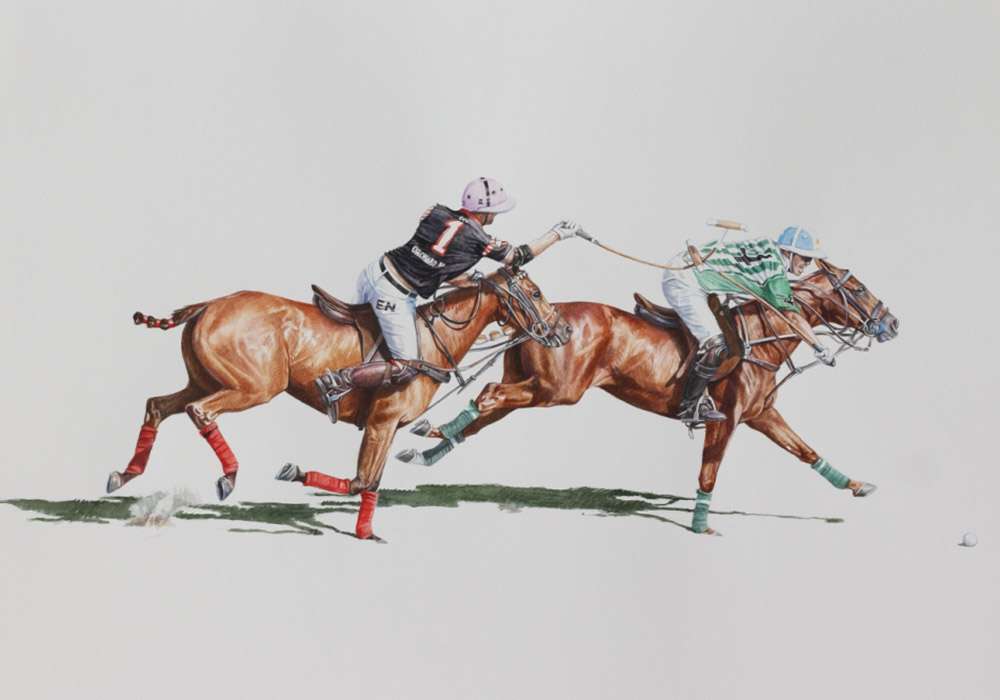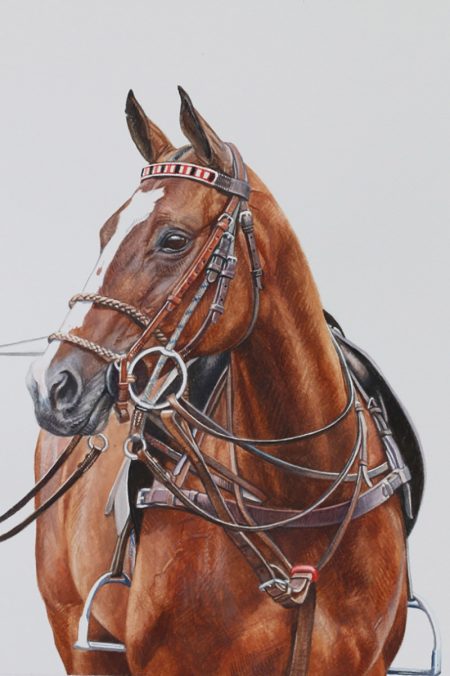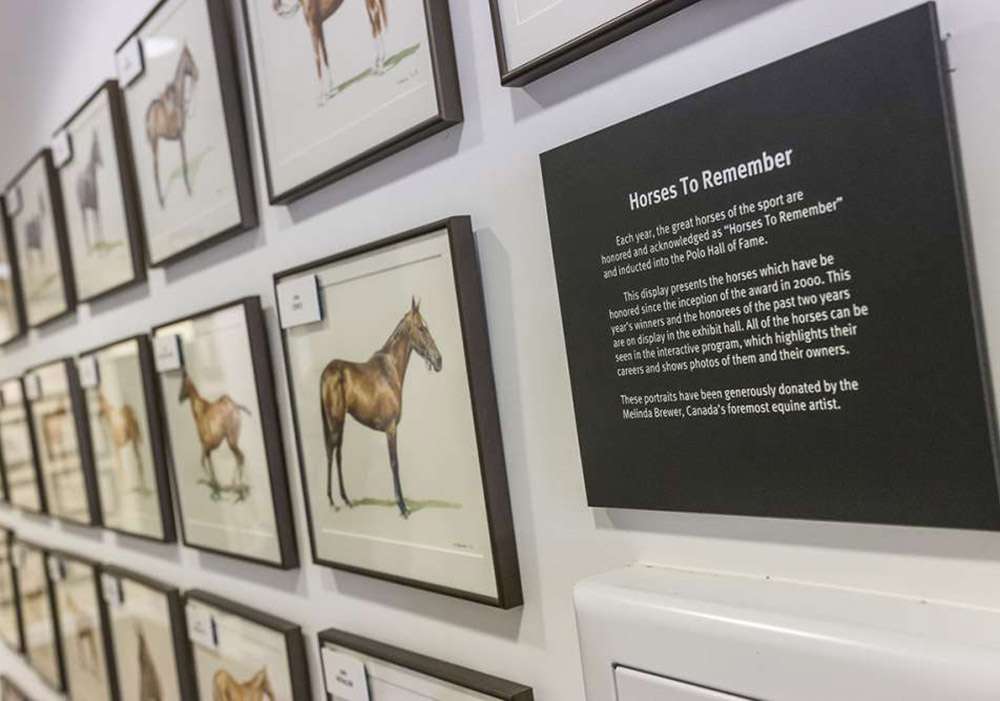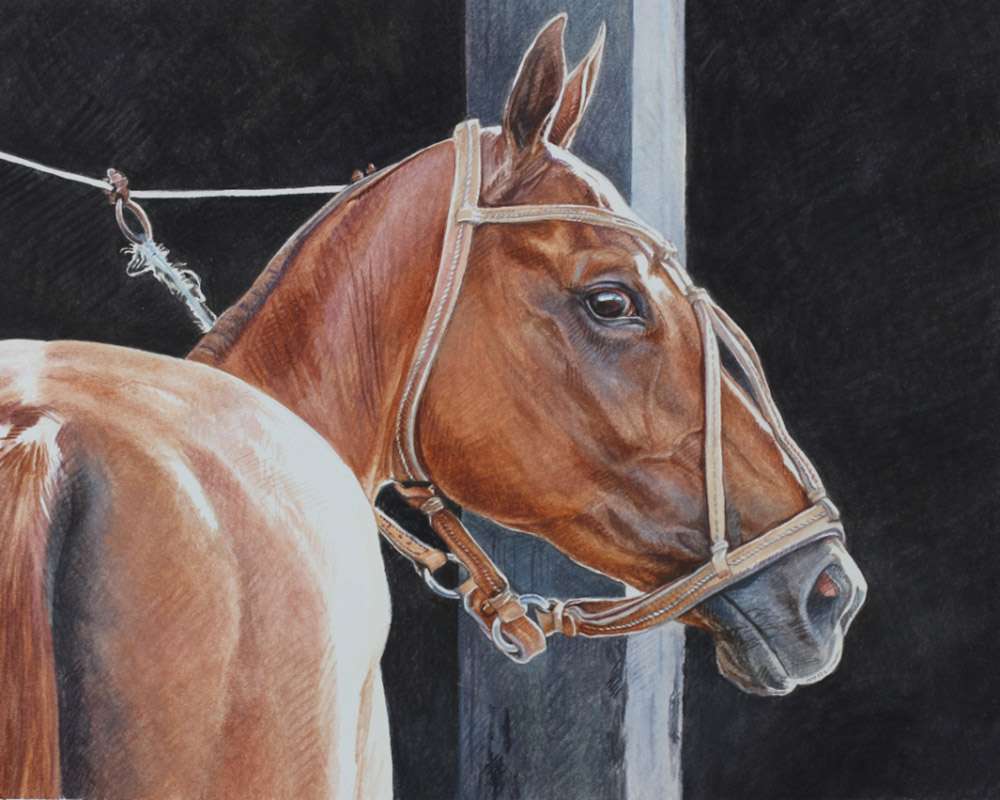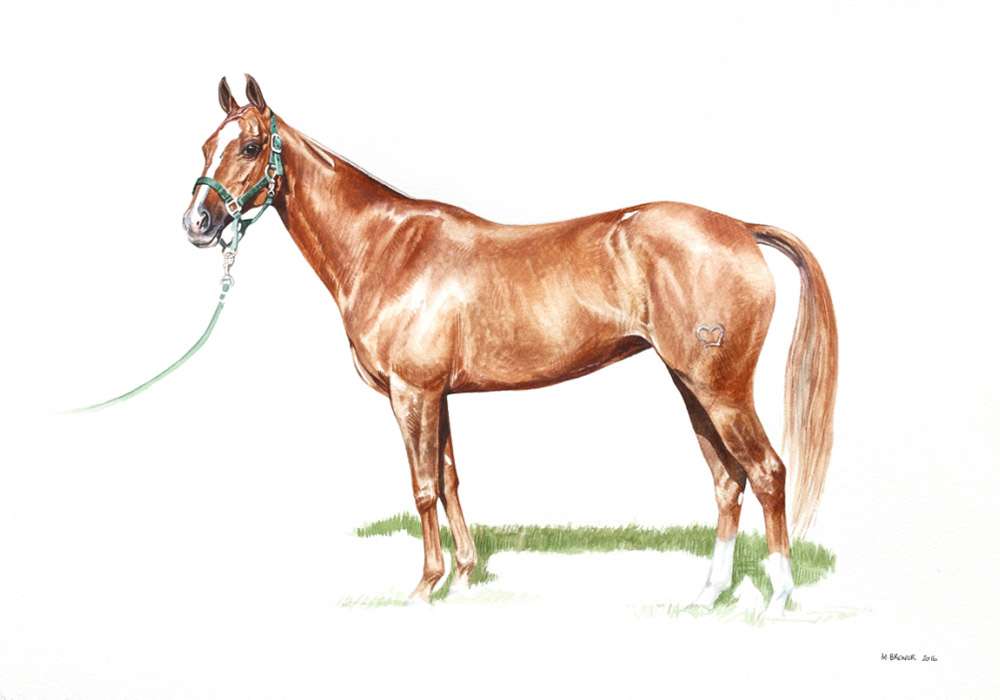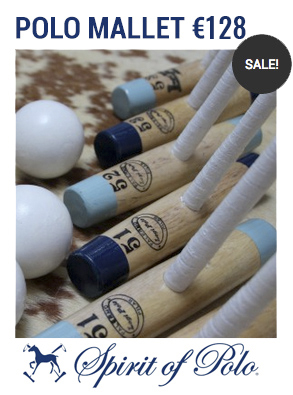Annually immortalizing some of the most memorable polo ponies to play the game, professional painter Melinda Brewer has completed over 200 commissioned polo portraits to date, commemorating both inductees to the Hall of Fame and high-goal Best Playing Ponies. Establishing a career as a wildlife painter after graduating college with a fine arts degree in 1982, a decade later Brewer shifted her focus to the untapped market of polo, assuming the important role of chronicling the sport’s champions for posterity. Living and working out of her studio just outside Montreal in Quebec, Canada, this Canadian artist has traveled to South Florida every winter for the high-goal season since the mid 1990s and across North America to capture the images and stories of polo’s top equine athletes. Although herself not a polo player, Brewer’s love for the polo horse emanates through her thoughtful portraiture, lining the walls of the Museum of Polo and Hall of Fame in Lake Worth, Florida, the International Polo Club Palm Beach (Wellington, Florida) and numerous other clubs which house her exhibitions.
Taking her growing collection of watercolor paintings a step further, Brewer compiled the first edition of Polostars in 2004, a beautiful annual souvenir publication highlighting some of the past year’s Best Playing Ponies through fine art portraits, photography and historical documentation. A project birthed with the idea of bringing greater recognition and distinction to polo ponies playing in North America, the book is envisioned to broaden in scope, including Best Playing Ponies representing lower goal levels.
What is your equestrian background and connection to polo?
“I have always ridden horses since I was a little kid in the pony club and did small hunter jumper shows. I got my first horse, an off-the-track-thoroughbred, when I was 15 and I’ve had horses all my life. I’m on my eighth horse now and I’ve gone from owning Thoroughbreds to Draft crosses. I have a Paint/Draft cross which I love and its perfect for pleasure riding on the trails.
I first saw polo in the early 1990s at the Montreal Polo Club in Canada. I was blown away because it was so different than my equestrian background and I loved the horses, the colors, the tack, everything. Once I saw polo I thought I could paint horses in a different way that would be viewed as fine art.
Comparative to other equestrian sports, I felt the strongest about the imagery of polo and I felt there were a lot of people doing horse racing, but not many doing polo. It felt like an open canvas for me because it was something I could paint and I wouldn’t be repeating anyone else’s artwork. I could be creating something original without influence because nobody else was doing it. Ultimately, I try to make something original that allows people to see the world of polo in a different way.”
“It’s interesting when you start to follow polo ponies as individuals and see where they are going and how they’re progressing.” – Melinda Brewer
When did you begin painting portraits for the Museum of Polo and Hall of Fame?
“I’ve been painting portraits and polo horses in particular since 2000. I offered to do the portraits of the horses inducted into the Hall of Fame which became the Horses to Remember collection. I thought that would be a wonderful commemoration for them and their achievements. I’ve been doing the Polostars book since 2004 and that comprises over 100 portraits of horses that I’ve painted that have been documented and recognized. It’s been an all-encompassing project because if I see a horse that has played in Florida and I didn’t get a good picture, but I know they will play again in Greenwich, Connecticut, I may try to go there and see it. It’s interesting when you start to follow polo ponies as individuals and see where they are going and how they’re progressing. For example, some of Sapo Caset’s young horses and the younger horses of Hilario Ulloa and Adolfo Cambiaso, you’ll see them popping up in different places.
It was the Museum’s project that got me started on following the horses because it wasn’t something we were really doing in the world of polo that people weren’t really talking about. I thought ‘this is great because we are actually going to be able to record and pay attention to what these horses are doing in their careers.’ By painting them we are going to honor them as well and have something we can keep over the years in remembrance of these great horses and their accomplishments.”
Tell us about the Polostars project and its importance to promoting the sport.
“When I started Polostars I thought how great it would be to have people start to recognize the horses more so a spectator could come to the field and say, ‘I know who that horse is because I’ve seen them in a picture.’ In this way we begin to follow the sport through the horses like we do in horse racing and other equestrian disciplines. It’s difficult if you’re a horse person to look at a bay horse and distinguish it from another, but there are subtle differences and I think the more you see them you’ll find there’s a character about each horse which makes them recognizable and unique.”
After 14 years of Polostars, how do you envision the book’s anticipated expansion?
I would like to start talking about the Best Playing Ponies that play the 6- to 12-goal or the 4- to 6-goal. In the upcoming book for 2018, we already have a couple of 6-goal horses featured and we are going to talk about off-the-track-thoroughbreds. I would like it to be about Best Playing Ponies across all spectrums of polo, whether it’s 6-, 12- or 26-goal, and that’s where I’d like to see this going because there are many great ones who have been playing for many years. I think opening up the book is a really great way to make polo all-encompassing so we’re talking about high-goal horses alongside the lower goal horses. I’d like to in 2019 get out to some of those tournaments at The Villages® Polo Club and some of the smaller clubs in other parts of the United States, not only Florida, and see if we can tell the stories of those horses.
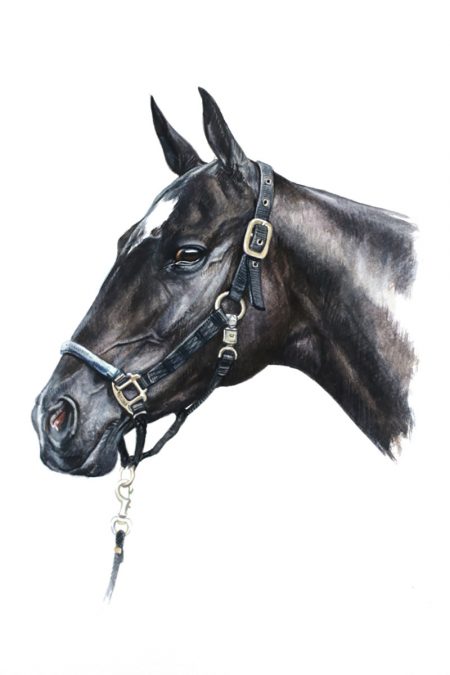
Mentolada, 2018 C.V. Whitney Final Best Playing Pony and Best Argentine Breeders Award for the 2017 U.S. Open Polo Championship®.
What is your biggest challenge when starting a new commission?
“Horses all have a character, they are individuals, so there may be a bunch of photos or thoughts I have about a certain horse and not one of them may describe that horse. Some horses can’t be described in a certain position because they have specific characteristics, some being relaxed, high-strung or aloof. That is my biggest challenge, not capturing any technical element, it’s trying to find the right image that describes the horse and is going to say enough about who that horse is.
A conformation portrait is not as difficult as finding the right expression on their face. Most horses will stand for a really nice portrait and you’ll get a nice traditional portrait if you are trying to accomplish only what the horse looks like. But if you want to get a little deeper into their personality it has to be more than the flat portrait. What I’ve found is if an ear goes back all the time, that’s okay because that’s who they are. I don’t have to have two ears pointed forward if they don’t do that.”
“That portrait to me said the most about that horse than I could ever say. It described everything I wanted to say about her as an individual. I have 40 or 50 pictures of her in different places throughout the seasons, but there wasn’t one picture that set me on fire. Then I got that image and I thought this is how I’m going to work it, I’m going to change the background and I felt that was an all-encompassing portrait.” – Melinda Brewer on Machitos Jazzita painting
Describe your process as an artist.
“’How would you want to be remembered in an image?’ I ask myself that question when I paint the horses because this is the image we are going to carry with us. I try not to be too influential on how I’m painting the portrait, but I want to put my stamp on it of how I am going to document this individual. When I do a commission I ask, ‘would you like to see them with a halter or a bridle, would you like to see them working, before or after working, do you want them to look bright or quiet, what are we trying to say about this horse in a portrait?'”
Do you have a story about a horse that will be featured in the upcoming book?
“I did a portrait of Rodrigo De Andrade’s gelding Sultan after he had won the 2011 Willis Hartman Best Playing Pony Award for the U.S. Open Polo Championship® Final. I looked back at the painting years later and wondered if I really captured that horse, I didn’t know if I had nailed it. He won the 2018 International Polo Club Wembley Award and I thought ‘there’s a horse that is deserving to win because he’s been around all these years and doesn’t look like a polo pony.’ Sultan is a big, handsome liver chestnut gelding and everybody would have looked at that horse and said he’s too big to play polo, but he’s won important awards and has longevity in polo still playing at 19-years-old.”
What do you love about your career?
“I’ve gotten to know many great horses and learn stories about them so I’m very lucky. Getting to paint some of the great polo ponies has been a thrill and an honor for me. I love the thought of being able to meet these individuals and have the ability to describe who they are. I said that to Hilario Ulloa when I got to paint his string of ponies after winning the 2018 award for Best Playing String of the Season. I love what I do and I feel it’s important to recognize these horses, talk about them, and to let people know what great athletes they are.”
What is it about the polo horse as a subject that captivates you?
“Polo ponies are very beautiful to look at, they’re just magnificent athletes, and beautifully put together. What makes a polo pony really special is what they do on the field, it’s really a unique talent. I don’t play polo myself, but I love what the horses do, they’re extreme and it’s admirable. It’s really beautiful when you think about the athleticism and character involved in being a competitor. I think it’s what got me started in polo, seeing the extraordinary character polo ponies have that you don’t see in all horses.”
Polostars is available year round for purchase at the National Museum of Polo and Hall of Fame with proceeds donated to the Museum. Also, the book will be available nationwide at various polo clubs during their respective tournament seasons.
